
Insurance data analytics provider Verisk Analytics (NASDAQ: VRSK) missed Wall Street’s revenue expectations in Q3 CY2025, but sales rose 5.9% year on year to $768.3 million. The company’s full-year revenue guidance of $3.07 billion at the midpoint came in 1.7% below analysts’ estimates. Its non-GAAP profit of $1.72 per share was 1% above analysts’ consensus estimates.
Is now the time to buy Verisk? Find out by accessing our full research report, it’s free for active Edge members.
Verisk (VRSK) Q3 CY2025 Highlights:
- Revenue: $768.3 million vs analyst estimates of $776.8 million (5.9% year-on-year growth, 1.1% miss)
- Adjusted EPS: $1.72 vs analyst estimates of $1.70 (1% beat)
- Adjusted EBITDA: $429 million vs analyst estimates of $431.3 million (55.8% margin, 0.5% miss)
- The company dropped its revenue guidance for the full year to $3.07 billion at the midpoint from $3.11 billion, a 1.4% decrease
- Management reiterated its full-year Adjusted EPS guidance of $6.90 at the midpoint
- EBITDA guidance for the full year is $1.71 billion at the midpoint, below analyst estimates of $1.74 billion
- Operating Margin: 45%, up from 42.9% in the same quarter last year
- Free Cash Flow Margin: 43.7%, up from 33.2% in the same quarter last year
- Constant Currency Revenue rose 5.5% year on year (6.8% in the same quarter last year)
- Market Capitalization: $32.43 billion
Company Overview
Processing over 2.8 billion insurance transaction records annually through one of the world's largest private databases, Verisk Analytics (NASDAQ: VRSK) provides data, analytics, and technology solutions that help insurance companies assess risk, detect fraud, and make better business decisions.
Revenue Growth
A company’s long-term sales performance is one signal of its overall quality. Any business can have short-term success, but a top-tier one grows for years.
With $3.03 billion in revenue over the past 12 months, Verisk is a mid-sized business services company, which sometimes brings disadvantages compared to larger competitors benefiting from better economies of scale.
As you can see below, Verisk’s 2% annualized revenue growth over the last five years was sluggish. This shows it failed to generate demand in any major way and is a rough starting point for our analysis.
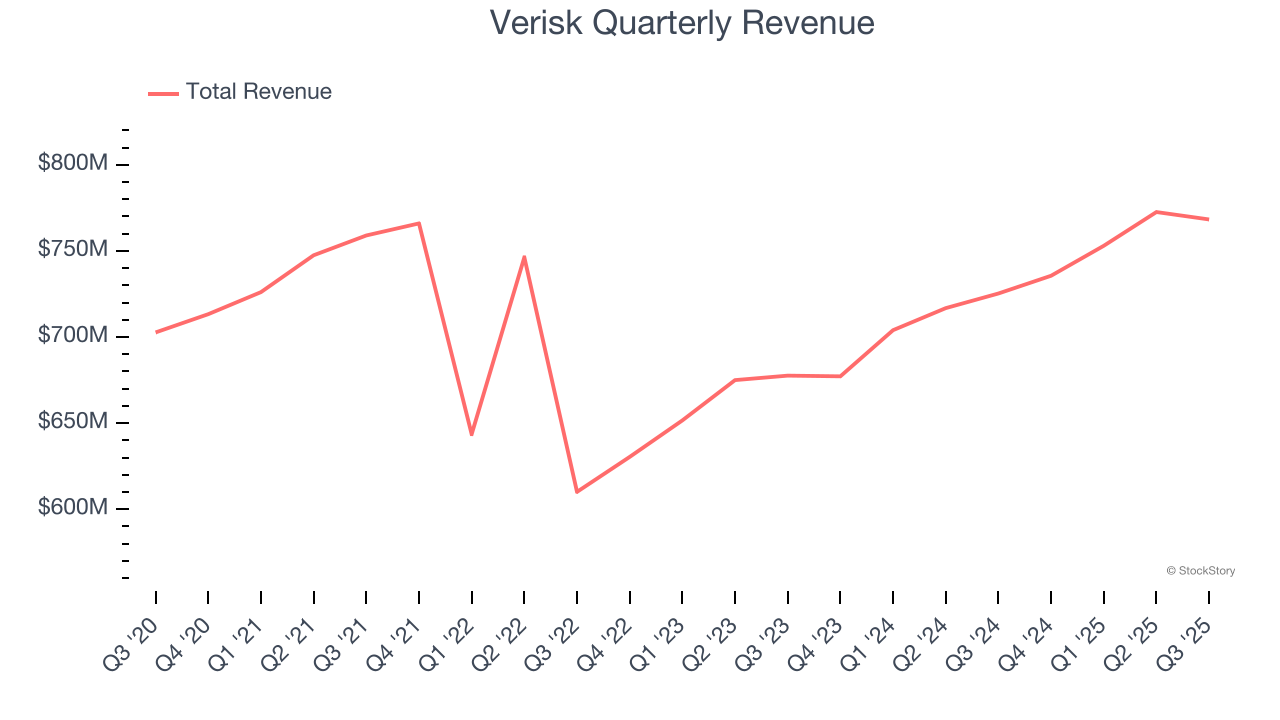
Long-term growth is the most important, but within business services, a half-decade historical view may miss new innovations or demand cycles. Verisk’s annualized revenue growth of 7.2% over the last two years is above its five-year trend, suggesting its demand recently accelerated. 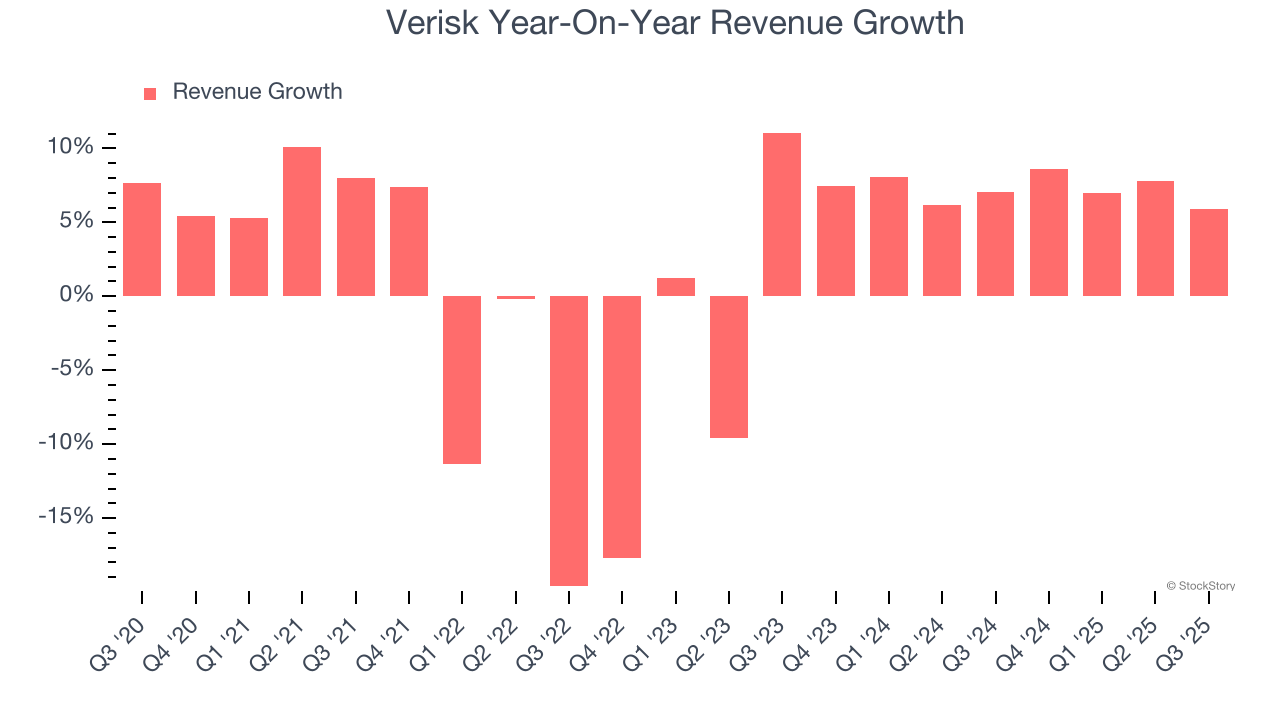
We can dig further into the company’s sales dynamics by analyzing its constant currency revenue, which excludes currency movements that are outside their control and not indicative of demand. Over the last two years, its constant currency sales averaged 7% year-on-year growth. Because this number aligns with its normal revenue growth, we can see that Verisk has properly hedged its foreign currency exposure. 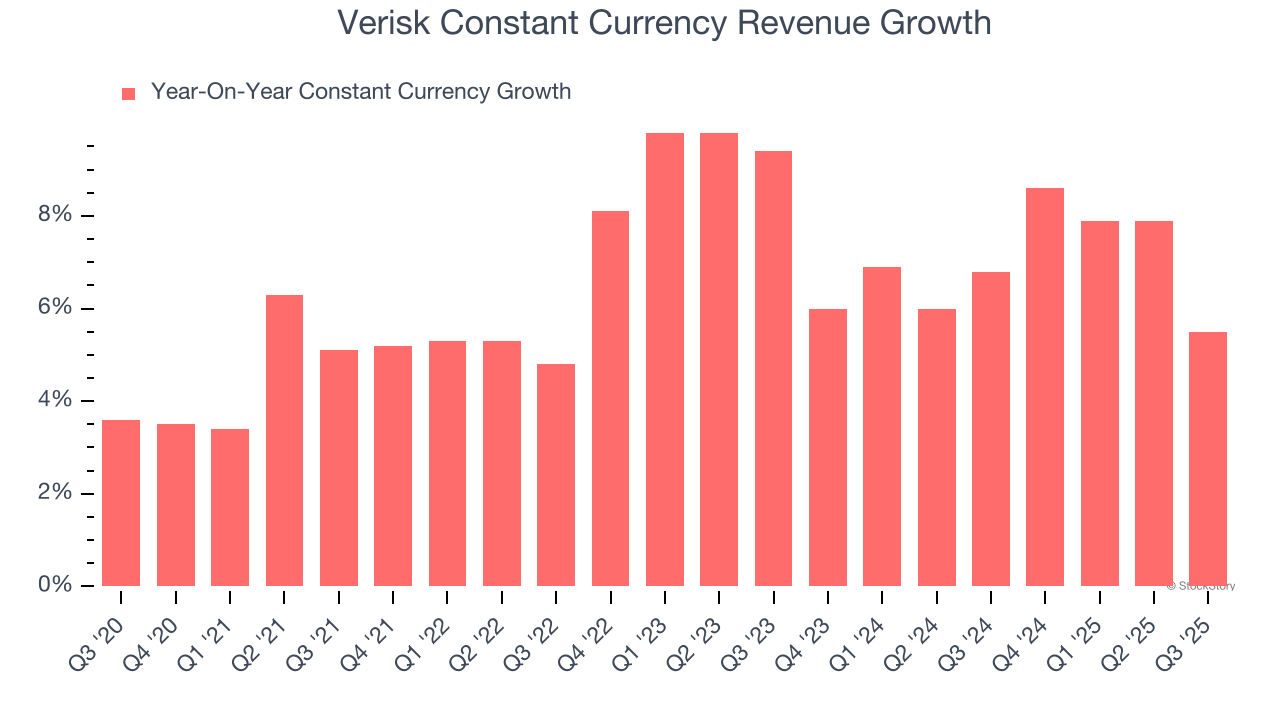
This quarter, Verisk’s revenue grew by 5.9% year on year to $768.3 million, missing Wall Street’s estimates.
Looking ahead, sell-side analysts expect revenue to grow 11.5% over the next 12 months, an improvement versus the last two years. This projection is healthy and indicates its newer products and services will catalyze better top-line performance.
Software is eating the world and there is virtually no industry left that has been untouched by it. That drives increasing demand for tools helping software developers do their jobs, whether it be monitoring critical cloud infrastructure, integrating audio and video functionality, or ensuring smooth content streaming. Click here to access a free report on our 3 favorite stocks to play this generational megatrend.
Operating Margin
Operating margin is one of the best measures of profitability because it tells us how much money a company takes home after subtracting all core expenses, like marketing and R&D.
Verisk has been a well-oiled machine over the last five years. It demonstrated elite profitability for a business services business, boasting an average operating margin of 43.2%.
Looking at the trend in its profitability, Verisk’s operating margin rose by 8.6 percentage points over the last five years, as its sales growth gave it operating leverage.
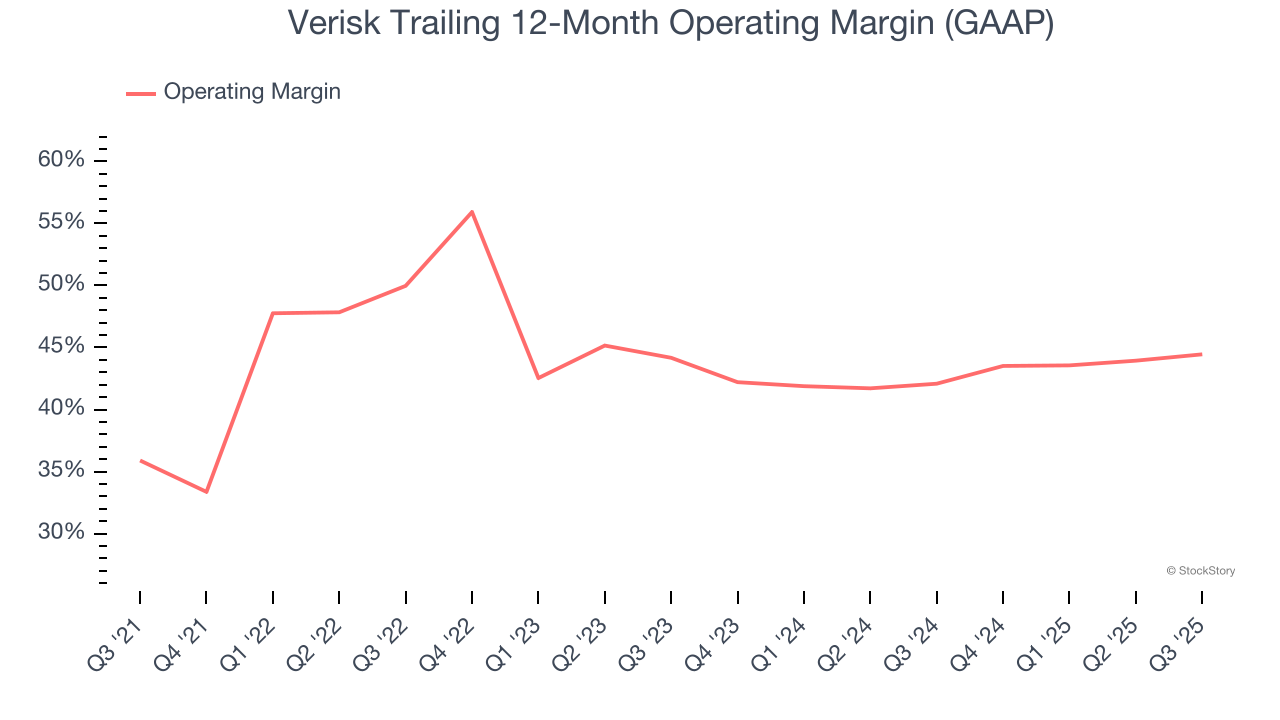
This quarter, Verisk generated an operating margin profit margin of 45%, up 2.1 percentage points year on year. This increase was a welcome development and shows it was more efficient.
Earnings Per Share
Revenue trends explain a company’s historical growth, but the long-term change in earnings per share (EPS) points to the profitability of that growth – for example, a company could inflate its sales through excessive spending on advertising and promotions.
Verisk’s EPS grew at an unimpressive 7.2% compounded annual growth rate over the last five years. On the bright side, this performance was better than its 2% annualized revenue growth and tells us the company became more profitable on a per-share basis as it expanded.
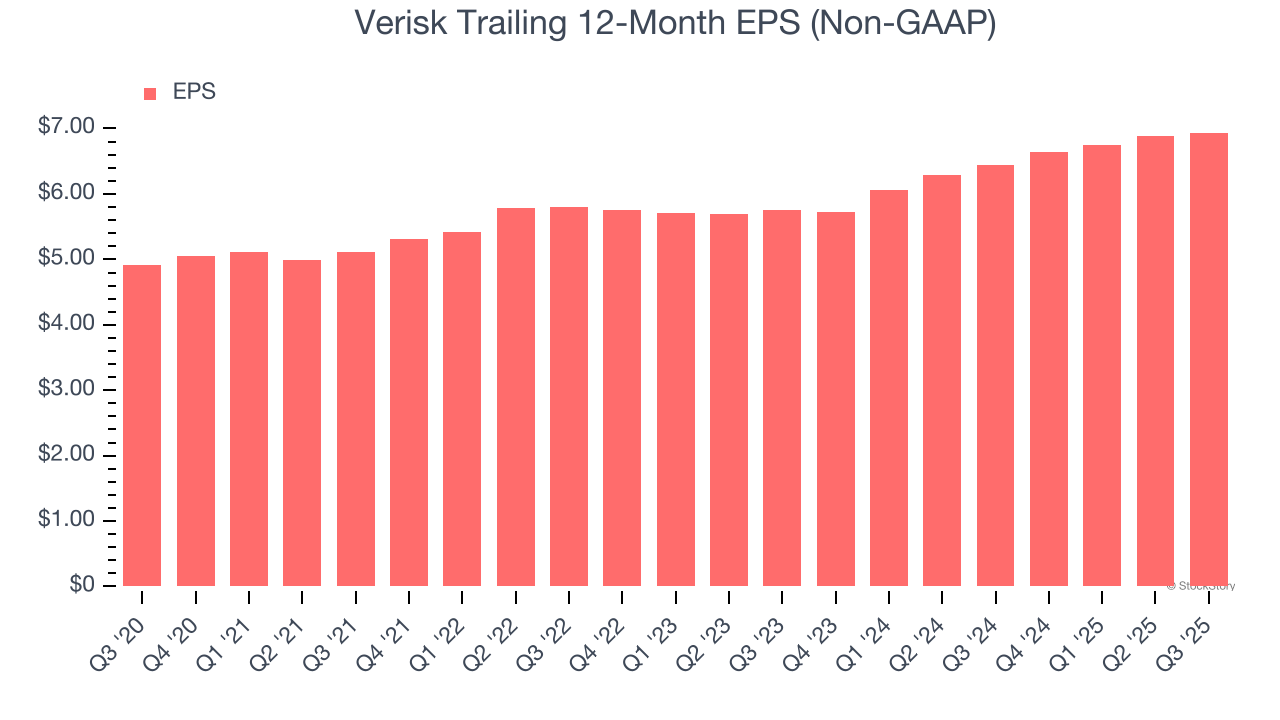
Diving into the nuances of Verisk’s earnings can give us a better understanding of its performance. As we mentioned earlier, Verisk’s operating margin expanded by 8.6 percentage points over the last five years. On top of that, its share count shrank by 15.6%. These are positive signs for shareholders because improving profitability and share buybacks turbocharge EPS growth relative to revenue growth. 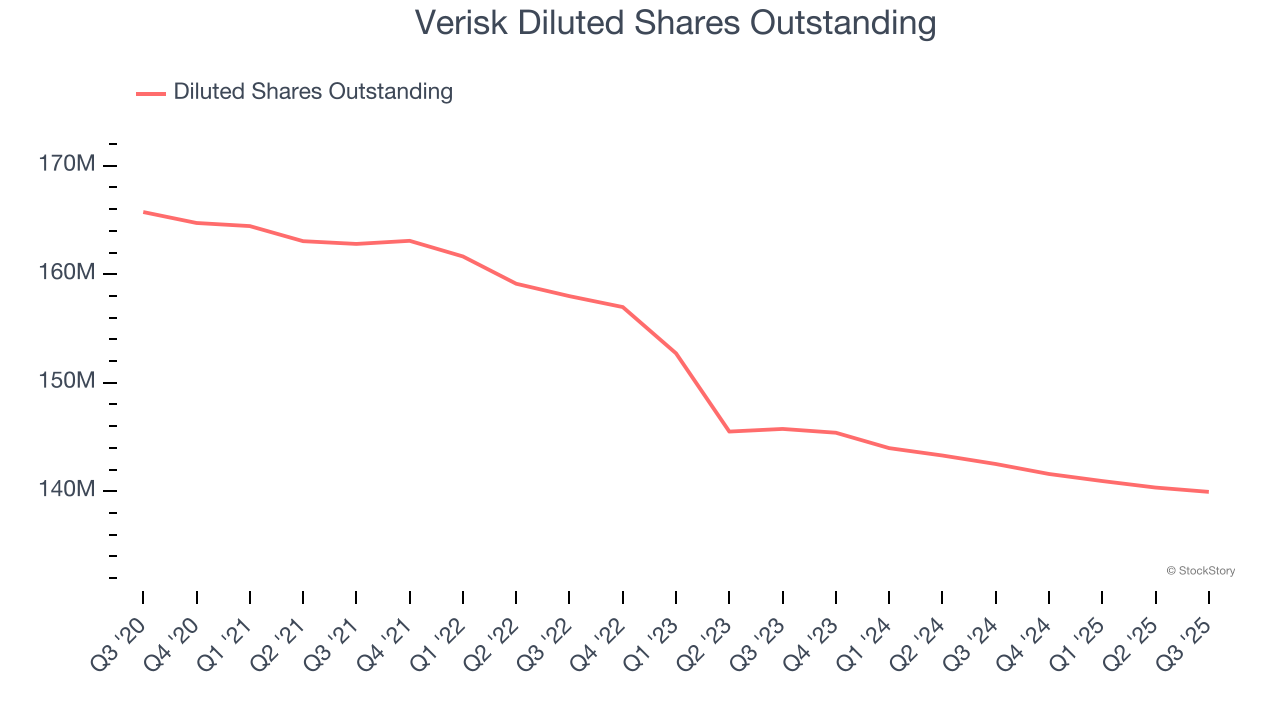
Like with revenue, we analyze EPS over a more recent period because it can provide insight into an emerging theme or development for the business.
For Verisk, its two-year annual EPS growth of 9.9% was higher than its five-year trend. Accelerating earnings growth is almost always an encouraging data point.
In Q3, Verisk reported adjusted EPS of $1.72, up from $1.67 in the same quarter last year. This print was close to analysts’ estimates. Over the next 12 months, Wall Street expects Verisk’s full-year EPS of $6.94 to grow 8%.
Key Takeaways from Verisk’s Q3 Results
We struggled to find many positives in these results. Its full-year revenue guidance missed and its revenue fell slightly short of Wall Street’s estimates. Overall, this quarter could have been better. The stock traded down 1.1% to $229.60 immediately after reporting.
Verisk’s latest earnings report disappointed. One quarter doesn’t define a company’s quality, so let’s explore whether the stock is a buy at the current price. The latest quarter does matter, but not nearly as much as longer-term fundamentals and valuation, when deciding if the stock is a buy. We cover that in our actionable full research report which you can read here, it’s free for active Edge members.





